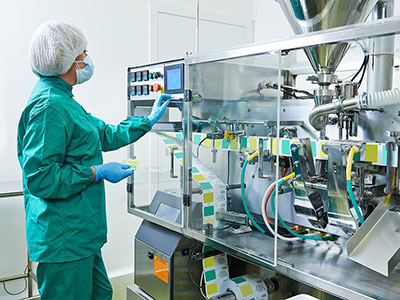

Manufacturing Matters – Safety & Security
Manufacturing promotes safety and security and mitigates risk. Controlling your supply chain and mitigating geopolitical risk can become paramount overnight as geopolitical events occur, natural disasters emerge, and supply chain challenges arise (strikes, disruptions, shortages). These types of issues have been increasingly concerning with recent events.
For example, the war in the Middle East has caused disruptions in the Suez Canal. Container ships are being diverted and traveling around the southern tip of Africa, adding 10,000 miles and 7-10 days. This situation delays critical supplies and causes further inflation with increased costs. Additionally, the reason China has been threatening Taiwan is partially to gain control over 90% of the world’s advanced computer chips that go into everything from medical devices to critical infrastructure.
During the pandemic, the U.S. discovered it was dependent on China for critical supplies and everyday necessities. Not only can a worldwide pandemic cause disruptions of these supplies, but country specific policies can dictate whether your supply will be cut off. For example, China rolled out zero COVID policies, directly impacting production and shipping to the U.S. China could prioritize who received limited supplies.
China also wants to control the Red Sea and could decide to cut off supplies produced in other Asian countries in the region. Clearly China thinks manufacturing is essential to national security. For example, their shipbuilding capabilities are over 200 times greater than the U.S. According to the Maritime Executive, China produces more than half of all new tonnage in the world. These types of statistics are gravely concerning and the proactive will build capabilities.
Manufacturing Will Thrive in the Next Decade
As companies realize they must gain control over their supply chain to better support customers, reshoring and regional expansion of manufacturing capabilities will soar. Additionally, the cost has come into alignment for non-commodity products if you evaluate the total cost to produce, ship, store, protect, etc., China won’t have the advantage. Piles of inventory tying up cash unnecessarily are no longer acceptable, especially as customer needs change rapidly, increasing the risk of obsolescence. As interest rates soar, this situation is untenable.
Customers are not willing to accept prolonged periods of delays and stock outs. Thus, they are taking control of their supply chain and focusing on manufacturing capabilities. In addition, companies must prioritize customers and address proactively with strategic pricing and capacity decisions. Thus, smart companies are utilizing a SIOP (Sales Inventory Operations Planning) process to proactively navigate these changing circumstances to maintain high levels of customer service, profitability, and working capital results. SIOP will bring visibility to customer and product profitability, sourcing decisions, make vs buy alternatives, capacity bottlenecks and more.
The proactive will thrive and have more opportunities than ever expected. In fact, they will be in the catbird seat. The rest will continually struggle and weaken. With the significant skills gap (refer to our recent article on where the talent has gone), the proactive executives are hoarding the “best of the best” (employees, trusted advisors, suppliers, etc.). Are you prepared to thrive?
If you are interested in reading more on this topic:
SIOP/ S&OP: Proactive Approach to Maximizing Production Output and Capacity


